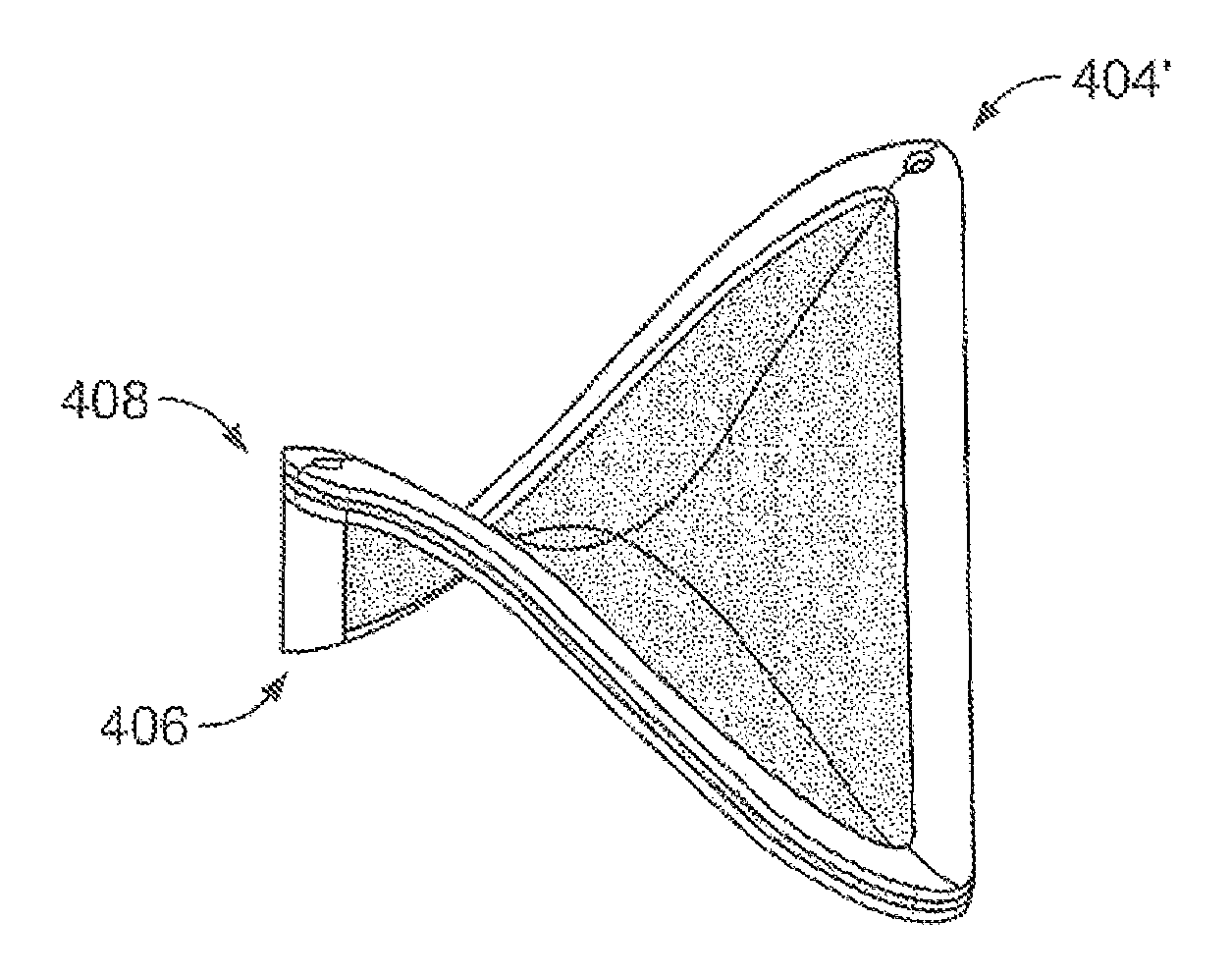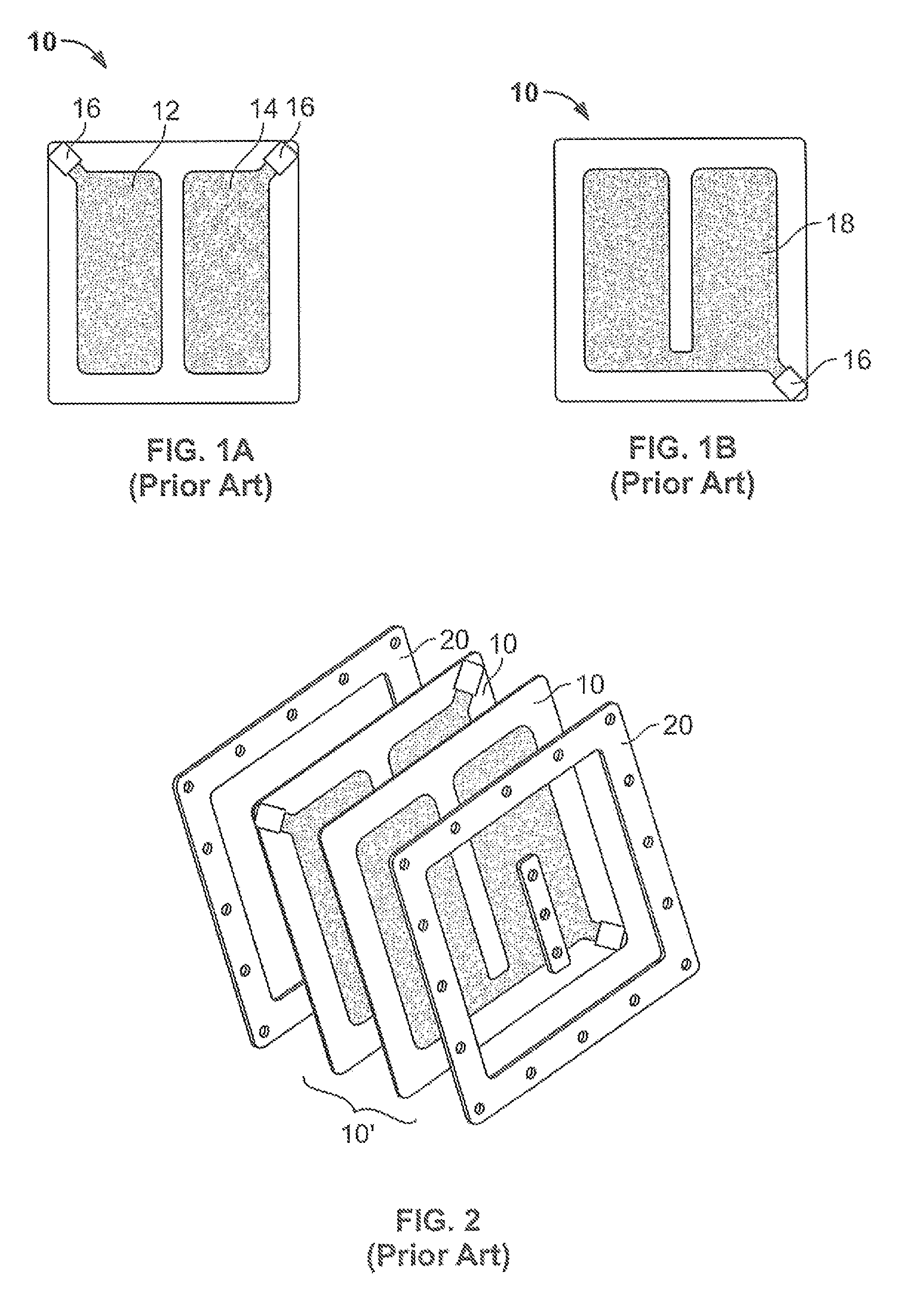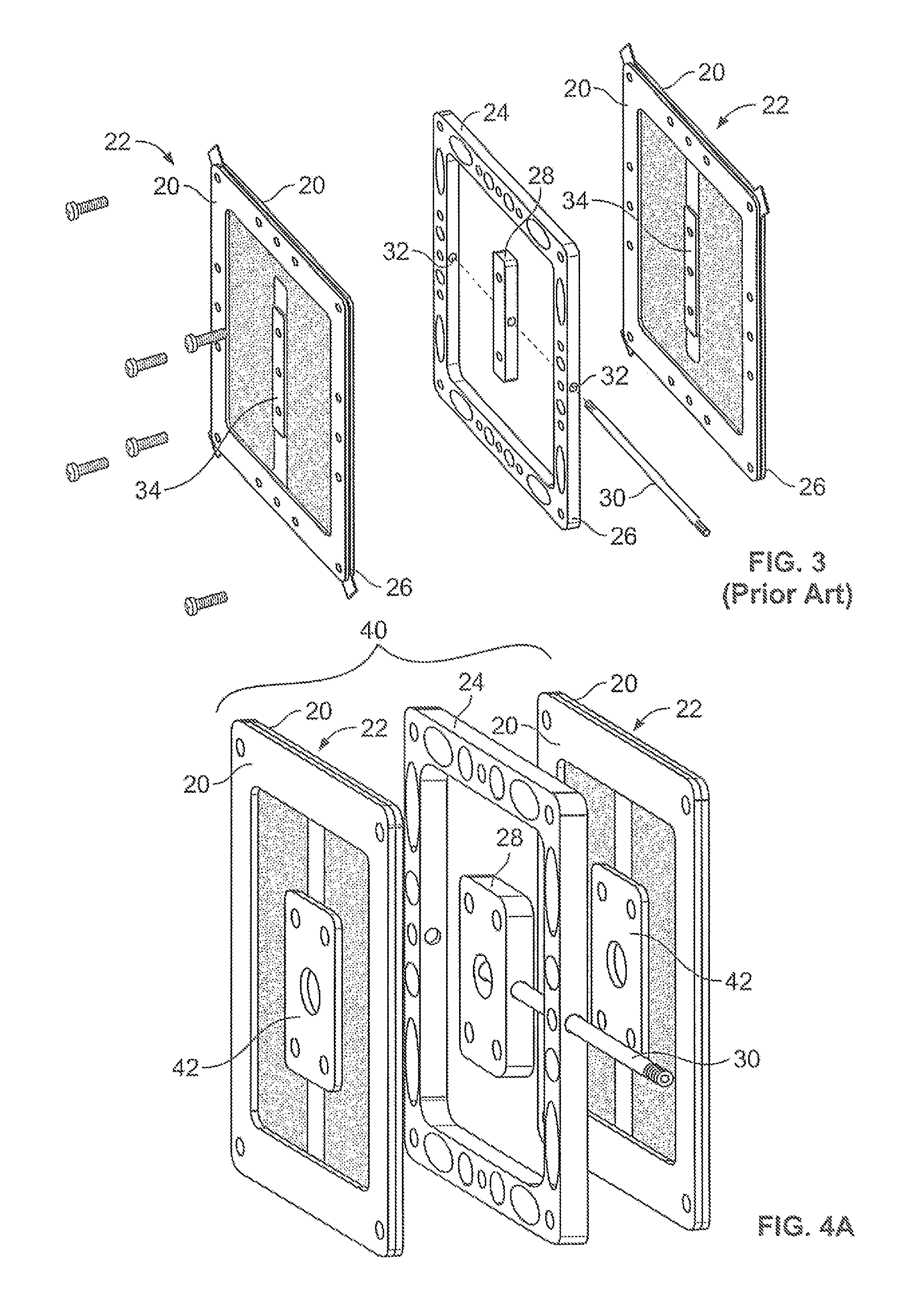Three-dimensional electroactive polymer actuated devices
a technology of electroactive polymer and actuator, applied in the direction of positive displacement liquid engine, lighting and heating apparatus, ornithopter, etc., can solve the problems of work output dropping significantly above about 100 hz, the limit of know actuators tied, and the performance limitation of acrylic-based epamTM actuators
- Summary
- Abstract
- Description
- Claims
- Application Information
AI Technical Summary
Benefits of technology
Problems solved by technology
Method used
Image
Examples
Embodiment Construction
[0092]Various exemplary embodiments of the invention are described below. A number of actuator / transducer embodiments are first described. Next, systems optionally incorporating such devices are described. They are provided to illustrate broadly applicable aspects of the present invention.
Frustum Transducers
[0093]FIGS. 1A and 1B show opposite sides of an EPAM™ layer 10. The layer comprises dielectric polymer sandwiched between elastic thin film electrodes. FIG. 1A shows the side of the layer patterned with “hot” electrodes 12 and 14. Each electrode is connected to a lead 16. FIG. 1B shows the opposite side of layer 10 patterned with a common “ground” electrode 18 connected to a single lead 16.
[0094]As shown in FIG. 2, multiple film layers 10 are stacked and held in a stretched state within frame pieces 20. A number of individual EPAM™ layers 10 are advantageously stacked to form a compound layer 10′. Doing so amplifies the force potential of the system. The number of layers stacked ...
PUM
| Property | Measurement | Unit |
|---|---|---|
| angle | aaaaa | aaaaa |
| angle | aaaaa | aaaaa |
| frequencies | aaaaa | aaaaa |
Abstract
Description
Claims
Application Information
 Login to View More
Login to View More - R&D
- Intellectual Property
- Life Sciences
- Materials
- Tech Scout
- Unparalleled Data Quality
- Higher Quality Content
- 60% Fewer Hallucinations
Browse by: Latest US Patents, China's latest patents, Technical Efficacy Thesaurus, Application Domain, Technology Topic, Popular Technical Reports.
© 2025 PatSnap. All rights reserved.Legal|Privacy policy|Modern Slavery Act Transparency Statement|Sitemap|About US| Contact US: help@patsnap.com



